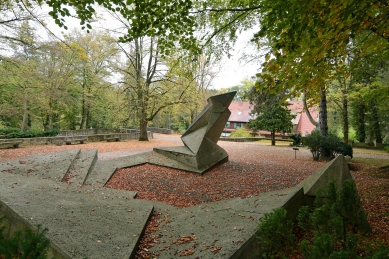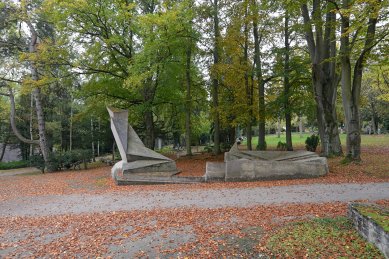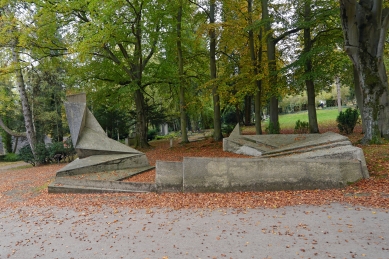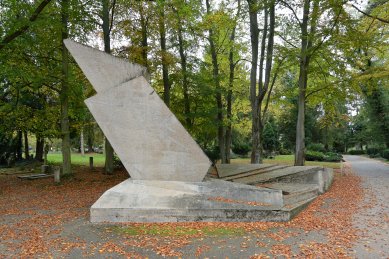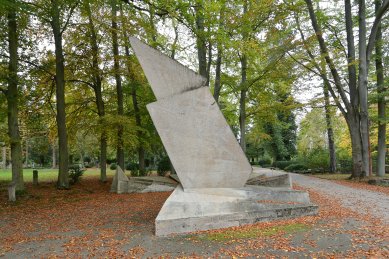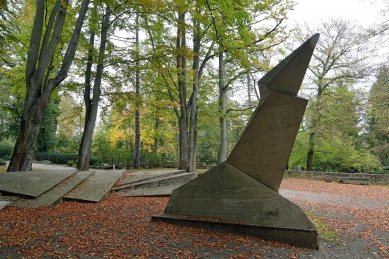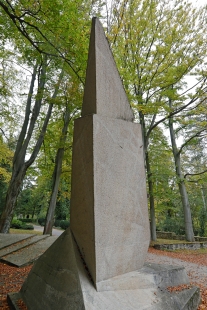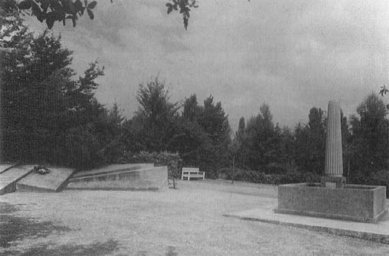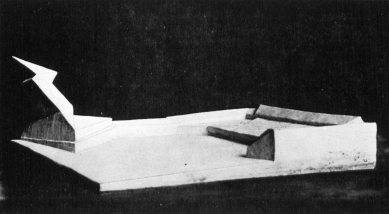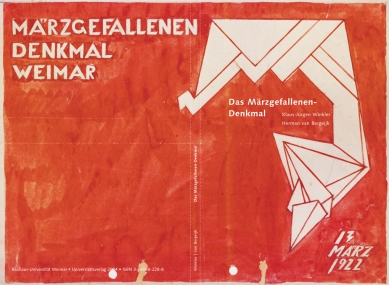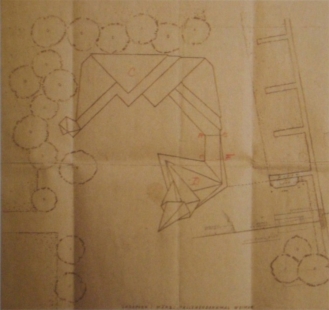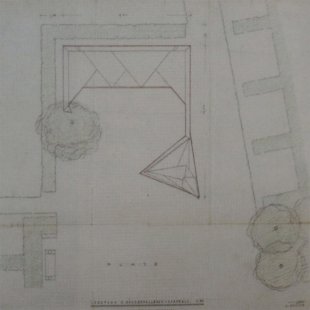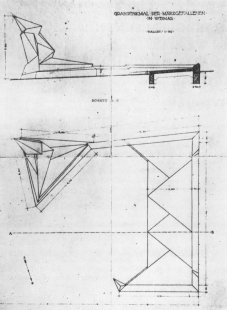
<translation>Monument to the victims of the March coup</translation>
The Monument for the March Fallen 1920

The founder of the Bauhaus art school, Walter Gropius, is mostly associated with the promotion of the industrialization of design and the clean lines of the international architectural style. In the shadow and irrevocable ruins, Gropius's brief expressionist period after World War I remains overlooked.
The wooden villa for Berlin builder Adolf Sommerfeld (realized 1920-22, attacked 1933, expropriated 1935, and demolished during World War II) still bears classical proportions on the outside, but dynamic geometrizing decor has significantly established itself inside. The most significant preserved monument from Gropius's expressionist period is thus the memorial dedicated to the victims of the Kapp Putsch, when on March 15, 1920, eight workers and one worker were killed in Weimar. At that time, right-wing radicals dissatisfied with the outcome of World War I, the collapse of the monarchy, and especially the establishment of the Weimar Republic unsuccessfully attempted a coup over four days.
To commemorate the fallen defenders, the Weimar city council decided in June 1920 to take over the management of the graves in the old cemetery, and under the leadership of architect Heinrich Vogeler, the first designs for the memorial were created. Later, a competition was held, in which a number of Weimar artists participated.
The committee had two favorites: the graphic work of Josef Heise and the newly arrived Walter Gropius. Ultimately, Gropius's design was selected, which later underwent several changes (especially gaining more dynamism). In August 1921, a new location for the memorial was decided upon, and on May 1, 1922, it was ceremonially unveiled. The object was originally to be made of travertine (limestone from nearby Ehringsdorf), but the construction was ultimately carried out in concrete with a textured surface finish of artificial stone. Gropius and construction councilor Lehrmann were still planning adjustments to the spaces and landscaping in the surroundings in 1924.
After the Nazis came to power, part of the memorial was demolished in 1935 (the lower back part was overgrown with ivy) to be replaced by a classicizing obelisk with a fountain. After the end of World War II, the memorial was restored to its original state in 1946.
The wooden villa for Berlin builder Adolf Sommerfeld (realized 1920-22, attacked 1933, expropriated 1935, and demolished during World War II) still bears classical proportions on the outside, but dynamic geometrizing decor has significantly established itself inside. The most significant preserved monument from Gropius's expressionist period is thus the memorial dedicated to the victims of the Kapp Putsch, when on March 15, 1920, eight workers and one worker were killed in Weimar. At that time, right-wing radicals dissatisfied with the outcome of World War I, the collapse of the monarchy, and especially the establishment of the Weimar Republic unsuccessfully attempted a coup over four days.
To commemorate the fallen defenders, the Weimar city council decided in June 1920 to take over the management of the graves in the old cemetery, and under the leadership of architect Heinrich Vogeler, the first designs for the memorial were created. Later, a competition was held, in which a number of Weimar artists participated.
The committee had two favorites: the graphic work of Josef Heise and the newly arrived Walter Gropius. Ultimately, Gropius's design was selected, which later underwent several changes (especially gaining more dynamism). In August 1921, a new location for the memorial was decided upon, and on May 1, 1922, it was ceremonially unveiled. The object was originally to be made of travertine (limestone from nearby Ehringsdorf), but the construction was ultimately carried out in concrete with a textured surface finish of artificial stone. Gropius and construction councilor Lehrmann were still planning adjustments to the spaces and landscaping in the surroundings in 1924.
After the Nazis came to power, part of the memorial was demolished in 1935 (the lower back part was overgrown with ivy) to be replaced by a classicizing obelisk with a fountain. After the end of World War II, the memorial was restored to its original state in 1946.
The English translation is powered by AI tool. Switch to Czech to view the original text source.
0 comments
add comment


